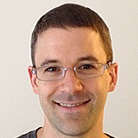7: Cosmology
- Page ID
- 45377
\( \newcommand{\vecs}[1]{\overset { \scriptstyle \rightharpoonup} {\mathbf{#1}} } \) \( \newcommand{\vecd}[1]{\overset{-\!-\!\rightharpoonup}{\vphantom{a}\smash {#1}}} \)\(\newcommand{\id}{\mathrm{id}}\) \( \newcommand{\Span}{\mathrm{span}}\) \( \newcommand{\kernel}{\mathrm{null}\,}\) \( \newcommand{\range}{\mathrm{range}\,}\) \( \newcommand{\RealPart}{\mathrm{Re}}\) \( \newcommand{\ImaginaryPart}{\mathrm{Im}}\) \( \newcommand{\Argument}{\mathrm{Arg}}\) \( \newcommand{\norm}[1]{\| #1 \|}\) \( \newcommand{\inner}[2]{\langle #1, #2 \rangle}\) \( \newcommand{\Span}{\mathrm{span}}\) \(\newcommand{\id}{\mathrm{id}}\) \( \newcommand{\Span}{\mathrm{span}}\) \( \newcommand{\kernel}{\mathrm{null}\,}\) \( \newcommand{\range}{\mathrm{range}\,}\) \( \newcommand{\RealPart}{\mathrm{Re}}\) \( \newcommand{\ImaginaryPart}{\mathrm{Im}}\) \( \newcommand{\Argument}{\mathrm{Arg}}\) \( \newcommand{\norm}[1]{\| #1 \|}\) \( \newcommand{\inner}[2]{\langle #1, #2 \rangle}\) \( \newcommand{\Span}{\mathrm{span}}\)\(\newcommand{\AA}{\unicode[.8,0]{x212B}}\)
- 7.1: Modeling the Universe
- Metrics come about by first proposing a matter/energy distribution and then solving the Einstein Field Equations. E.g., to get the metric of a star or black hole we can think of the universe as containing a single point mass with spherical symmetry and by imposing this constraint, we solve the equations to get the Schwarzschild metric. However, what if we want to determine a metric for the universe as a whole? What does the distribution of matter look like? What constraints can we impose?
- 7.2: The Friedmann-Lemaitre-Robertson-Walker Metric
- Solving the Einstein Field Equations given the conditions that the universe is homogeneous and isotropic yields what we call the Friedmann-Lemaitre-Robertson-Walker (FLRW) Metric, named after four scientists who each made individual contributions.
- 7.3: Redshift
- Previously, we saw that the proper distance between two objects can increase or decrease with time depending on the function a(t) , even if the objects are "stationary". What if those two "objects" are the crests of a light wave? As the light wave travels, then distance between those two crests can change. This causes the wavelength, and therefore the frequency, of the wave to change. We refer to this as cosmological redshift.
- 7.4: Evidence of Expansion
- In 1929, Edwin Hubble combined Vesto Slipher's redshift and velocity measurements of galaxies with Henrietta Swan Leavitt's distance-finding procedure and discovered that there is a roughly linear relationship between a galaxy's distance from us and its recessional velocity (i.e. its velocity away from us).
- 7.5: The Friedmann Equation
- In 1922, Alexander Friedmann combined the Friedmann–Lemaître–Robertson–Walker metric with the Einstein Field equations and discovered a way to determine a(t). We now call it the Friedmann Equation.
Thumbnail: A star-forming region in the Large Magellanic Cloud (CC BY-4.0; ESA/Hubble via Wikipedia)


